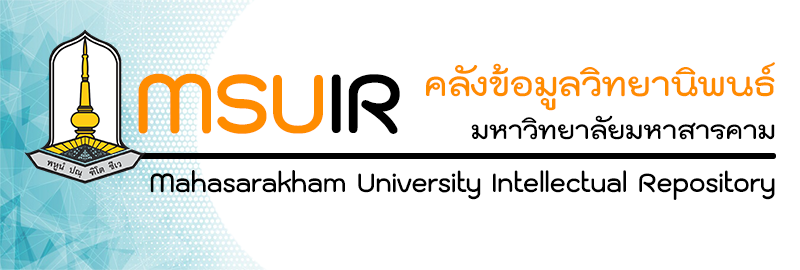Please use this identifier to cite or link to this item:
http://202.28.34.124/dspace/handle123456789/2891| Title: | Hepatotoxicity from standardized antituberculous drugs: Prevention, incidence, risk factors, management and treatment results ภาวะพิษต่อตับจากยาวัณโรคสูตรมาตรฐาน :การป้องกัน อุบัติการณ์ ปัจจัยเสี่ยง การจัดการและผลการรักษา |
| Authors: | Pattaraporn Akkahadsee ภัทราพร อรรคฮาตสี Ratree Sawangjit ราตรี สว่างจิตร Mahasarakham University Ratree Sawangjit ราตรี สว่างจิตร ratree.m@msu.ac.th ratree.m@msu.ac.th |
| Keywords: | ภาวะพิษต่อตับจากยาวัณโรค การป้องกันการเกิดพิษต่อตับ การวิเคราะห์อภิมานเครือข่าย ยาวัณโรค Anti-tuberculosis induced hepatotoxicity Hepatoprotective agents Network meta-analysis Tuberculosis drug |
| Issue Date: | 16 |
| Publisher: | Mahasarakham University |
| Abstract: | Introduction: Tuberculosis is one of the major public health concern in Thailand. The World Health Organization and Thailand guidelines recommend a standard short-term regimen which is the most effective regimen. However, tuberculosis drugs induced liver injury (TB-DILI) is the most common adverse event during the intensive phase of treatment. Recently, there is no guideline for management or prevent of this adverse event. In addition, incidence and risk factors for tuberculosis drugs induced hepatotoxicity are variety. Therefore, this study examined the incidence, risk factors, and pattern for management of TB-DILI using database analysis and compared the efficacy and safety of all interventions to prevent TB-DILI using a systematic review and network meta-analysis.
Methods: This study was performed into 2 parts including a retrospective database analysis for evaluating data of new case TB patients who treated with standard regimen in Mahasarakham hospital from 1 January to 31 December 2019, and a systematic review and network meta-analysis was performed by searching from inception to 31 August, 2021 in 4 databases. Random-effects model was used to pool effect of each outcome.
Results: Based on retrospective study, 346 new tuberculosis patients were evaluated and 50 (14.45%) of them had hepatitis. Pyrazinamide was suspected to be the most common cause of hepatitis. The average time to detect TB-DILI was 17.2 (13.3) days. The majority of management was discontinuation of TB drug (98%), which returned liver function test level to normal at an average of 16.6 (2.0) days. Malnutrition, alcohol consumption, and high-dose tuberculosis exposure were all significantly associated with hepatotoxicity. (Odds ratio (OR) and 95%CI of each factor was 6.7 (3.1-14.4), 2.4 (1.2-4.9), and 4.2 (1.4-12.4), respectively).The network meta-analysis indicated that turmeric combination (Curcuma longa and Tinospora cordifolia formulations), and N-acetylcysteine (NAC) were the most effective in preventing TB-DILI (risk ratio (RR) and 95%CI of each intervention was 0.07 (0.02-0.28), and 0.09 (0.01-0.75), respectively). For other interventions including Silymarin, VitaminD, Livina, Garcin, Carnitine, Bicyclol, VitaminA, VitaminA plus D, Jian'ganle Hugan Pian, and Glucuronolactone, there were no statistically significant difference for preventing TB-DILI when compared to placebo or no treatment. All treatments used in this study was safe and there was no report of any serious adverse effect.
Conclusion: Incidence of TB-DILI in this study is higher than those previous report in Thai but the risk factors and patterns of management are similar. Network meta-analysis indicates that using combination of Curcuma longa and Tinospora cordifolia product along with TB drug may be the most effective and safe to prevent TB-DILI. บทนำ: วัณโรคเป็นปัญหาสำคัญด้านสาธารณสุขในประเทศไทย แนวทางการรักษาขององค์การอนามัยโลกและประเทศไทยแนะนำให้ผู้ป่วยรายใหม่ใช้สูตรยามาตรฐานระยะสั้นเนื่องจากมีประสิทธิภาพดีที่สุด อย่างไรก็ตามการบาดเจ็บของตับจากยาวัณโรค เป็นเหตุการณ์ไม่พึงประสงค์สำคัญที่พบได้บ่อยในช่วงการรักษาระยะเข้มข้น ซึ่งปัจจุบันยังไม่มีแนวทางการรักษาหรือป้องกันภาวะนี้ อีกทั้งอุบัติการณ์และปัจจัยเสี่ยงของภาวะนี้ยังมีความหลากหลาย ดังนั้นการศึกษานี้จึงศึกษาอุบัติการณ์ ปัจจัยเสี่ยง รูปแบบการจัดการการบาดเจ็บของตับจากยาวัณโรคโดยใช้การวิเคราะห์ฐานข้อมูล เปรียบเทียบประสิทธิภาพและความปลอดภัยของวิธีการทั้งหมดในการป้องกันการบาดเจ็บของตับจากยาวัณโรค โดยใช้การทบทวนวรรณกรรมอย่างเป็นระบบและวิเคราะห์อภิมานเครือข่าย วิธีการศึกษา: การศึกษานี้แบ่งเป็น 2 ส่วน ได้แก่ การวิเคราะห์ฐานข้อมูลย้อนหลังเพื่อประเมินข้อมูลผู้ป่วยวัณโรครายใหม่ที่ได้รับยาวัณโรคสูตรมาตรฐานทั้งแผนกผู้ป่วยนอกและผู้ป่วยในโรงพยาบาลมหาสารคาม ตั้งแต่ 1 มกราคม พ.ศ. 2562 จนถึง 31 ธันวาคม พ.ศ.2562 และการทบทวนวรรณกรรมอย่างเป็นระบบและวิเคราะห์อภิมานเครือข่าย สืบค้นข้อมูลจากฐานข้อมูล 4 แหล่ง ตั้งแต่วันเริ่มต้นฐานข้อมูลจนถึงวันที่ 31 สิงหาคม 2565 วิเคราะห์รวมผลข้อมูลโดยใช้โมเดลแบบสุ่ม ผลการศึกษา: การศึกษาย้อนหลังวิเคราะห์ข้อมูลจากผู้ป่วยวัณโรครายใหม่จำนวน 346 ราย พบว่า เกิดภาวะตับอักเสบ 50 ราย (ร้อยละ 14.45) ยาที่คาดว่าจะเป็นสาเหตุที่ทำให้เกิดภาวะตับอักเสบมากที่สุดคือ Pyrazinamide ระยะเวลาในการเกิดพิษต่อตับจากยาวัณโรคมีค่าเฉลี่ย 17.2 (13.3) วัน การจัดการหลัก คือการให้ผู้ป่วยหยุดใช้ยาวัณโรค ซึ่งทำให้ค่าการทำงานของตับกลับมาเป็นปกติโดยเฉลี่ยที่ 16.6 (2.0) วัน ปัจจัยที่มีความสัมพันธ์ต่อการเกิดพิษต่อตับอย่างมีนัยสำคัญทางสถิติ ได้แก่ ภาวะทุพโภชนาการ มีโรคประจำตัวร่วม และการดื่มแอลกอฮอล์ (ค่าอัตราส่วนแต้มต่อ (OR) และช่วงความเชื่อมั่นที่ 95% ของแต่ละปัจจัยเท่ากับ 6.7 (3.1-14.4), 2.4 (1.2-4.9) และ 4.2 (1.4-12.4) ตามลำดับ) และผลการวิเคราะห์อภิมานเครือข่ายบ่งชี้ว่าสูตรผสมของสารสกัดจากขมิ้นชันและบอระเพ็ด (Curcuma longa และ Tinospora cordifolia formulation) และยา N-acetylcysteine มีประสิทธิภาพสูงสุดในการป้องกันพิษต่อตับจากยาวัณโรค (ค่าความเสี่ยงสัมพัทธ์ (RR) และช่วงความเชื่อมั่นที่ 95% ของยาแต่ละตัวเท่ากับ 0.07 (0.02-0.28) และ 0.09 (0.01-0.75) ตามลำดับ) ส่วนยาอื่น ๆ ได้แก่ Silymarin, VitaminD, Livina, Garcin, Carnitine, Bicyclol, VitaminA, VitaminA plusD, Jian'ganle Hugan Pian และ Glucuronolactone ไม่พบว่ามีความแตกต่างในการป้องกันการเกิดพิษต่อตับเมื่อเทียบกับการให้ยาหลอก หรือการรักษาด้วยยาวัณโรค การรักษาทุกชนิดที่ใช้ในการศึกษานี้มีความปอลดภัยและไม่มีรายงานการเกิดเหตุการณ์ไม่พึงประสงค์ที่รุนแรง สรุปผล: อุบัติการณ์ของการเกิดโรคตับจากยาวัณโรคในการศึกษานี้สูงกว่าการศึกษาก่อนหน้าที่รายงานในคนไทย แต่ปัจจัยเสี่ยงและรูปแบบการจัดการเหมือนกันผลการวิเคราะห์อภิมานเครือข่ายบ่งชี้ว่าการใช้ยาสูตรผสมของขมิ้นชันและบรเพ็ดพร้อมกับการใช้ยาต้านวัณโรคน่าจะเป็นยาที่มีความปลอดภัยและมีประสิทธิภาพดีที่สุดในการป้องกันการเกิดพิษต่อตับจากยาวัณโรค |
| URI: | http://202.28.34.124/dspace/handle123456789/2891 |
| Appears in Collections: | The Faculty of Pharmacy |
Files in This Item:
| File | Description | Size | Format | |
|---|---|---|---|---|
| 61010780001.pdf | 2.1 MB | Adobe PDF | View/Open |
Items in DSpace are protected by copyright, with all rights reserved, unless otherwise indicated.

